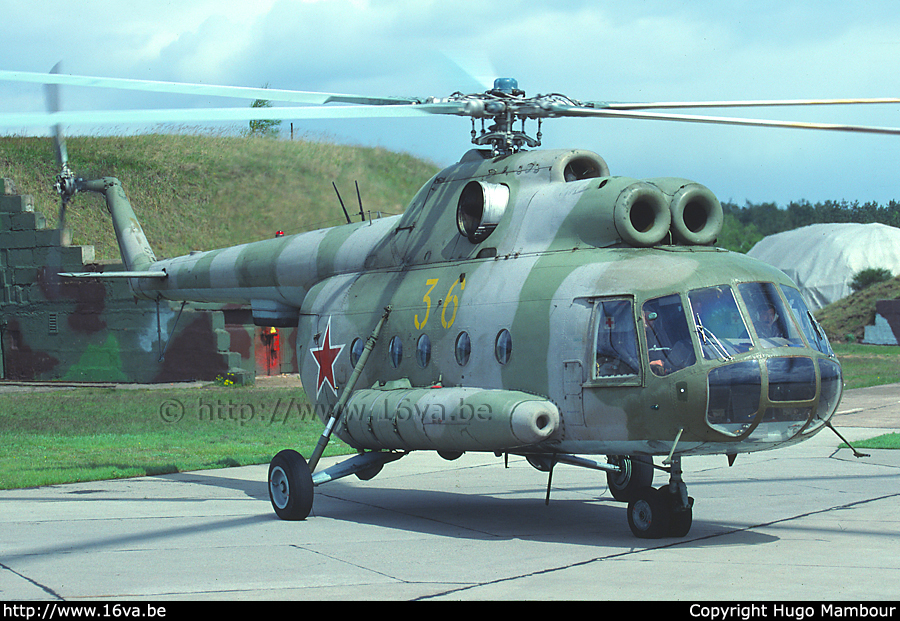

Ce Mi-8 qui ne présentait pas de caractéristiques particulières vu de l'extérieur, était pourtant un modèle dont l'intérieur de la soute avait été aménagé en configuration "Salon" avec sièges ou banquettes confortables et tablettes. Il s'agissait pourtant d'un Mi-8T dont les râteliers d'armement avaient été démontés (on distingue l'orifice du viseur OPB-1R sous le nez). Le support ventral triangulaire pour le transport sous élingues était également absent, mais les carénages du train principal intégraient des lampes FR-100. Comme tous les Mi-8 VIP observés au sein du GFSA, celui-ci était équipé d'un système IFF "Parol," trahi par la petite antenne triangulaire sous le nez. Cette machine du 226.OSAP était sans doute la même que celle qui fut photographiée en 1994, revêtue d'un nouveau camouflage et dotée d'un équipement radio différent > Lien.
This Mi-8 did not look particular seen from the outside. Nevertheless, its cargo hold was modified into a "Salon" configuration with seats or comfortable bench seats and small tables. However, it was an Mi-8T from which the weapon racks had been removed (one can distinguish the hole for the OPB-1R bombsight under the nose). The triangular frame used for transportation under a sling had also been removed, but the FR-100 lights were still present on the main landing gear fairings. Like all the VIP Mi-8s observed within the GSFG, this one was equipped with a "Parol" IFF system, betrayed by the small triangular antenna under the nose. This helicopter of the 226.OSAP was probably the same one photographed in 1994 painted in a new camouflage scheme and equipped with a different radio suite > Link.
